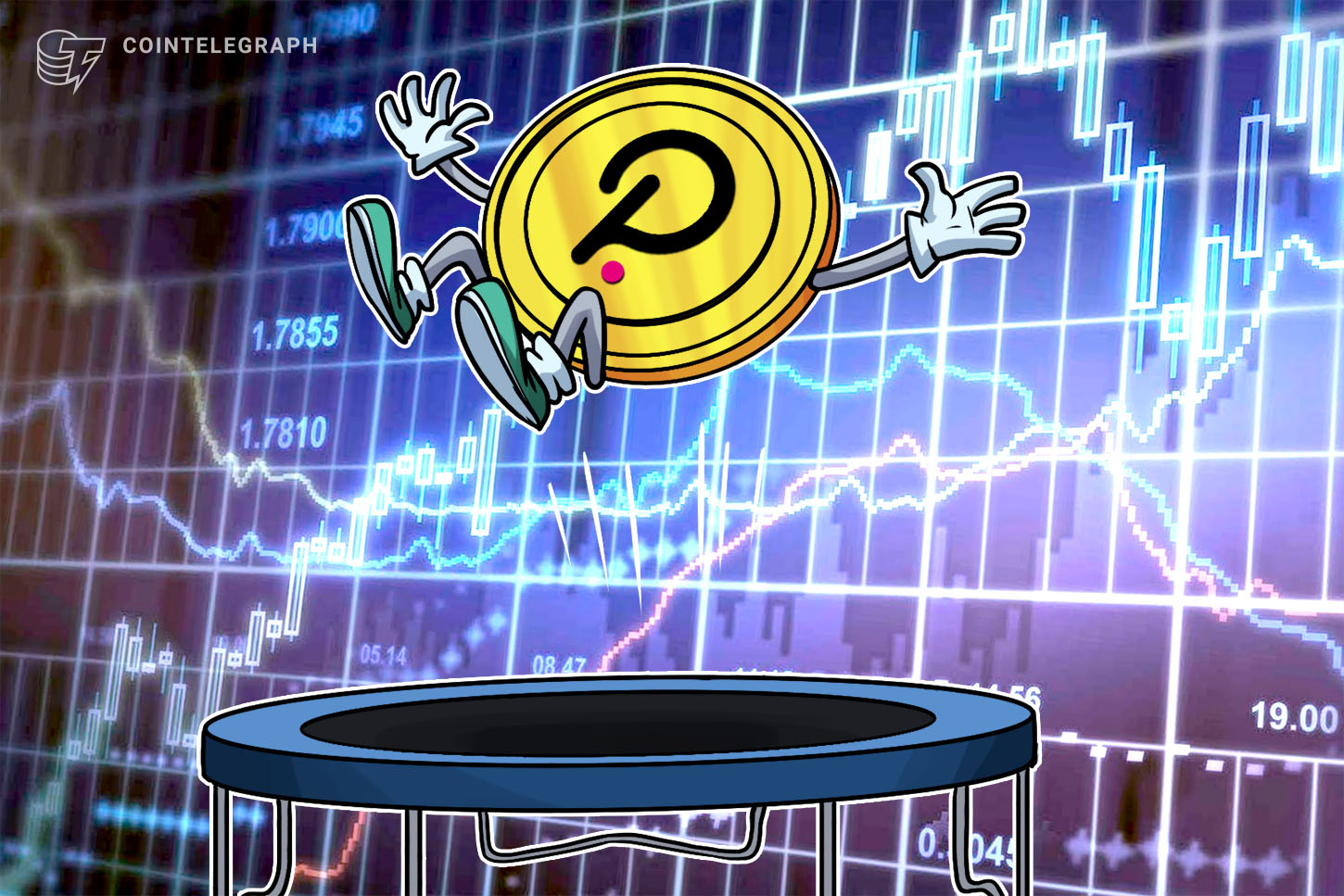This week, a number of contenders are set to participate in Polkadot's first parachain auctions and this process tends to place buy pressure on DOT, while also giving aspiring blockchain projects a chance to show why they offer the most competitive solutions to the different demands that exist in the crypto sector.
The ongoing Polkadot parachain auctions follow the success of similar auctions on its sister network Kusama, where projects like Moonriver (MOVR) and Karura have each successfully secured a parachain slot for the next year.

The Kusama parachain auctions began during a downturn in the wider crypto market and played a role in helping KSM recover from a low of $148.85 on July 19 to its current price near $457 as the tokens pledged to auctions were pulled from circulation.
Here’s a look at some of the parachain auctions currently underway on the Polkadot network and similar to the Kusama auctions, DOT could receive a boost as an increasing number of tokens are removed from the circulating supply.

Acala
Acala (ACA) is a layer-one smart contract platform billed as the decentralized finance (DeF) and liquidity hub of Polkadot. The protocol is Ethereum (ETH)-compatible and has built-in liquidity and ready-made financial applications, including a trustless exchange, a decentralized stablecoin (aUSD) and DOT Liquid Staking (LDOT).
Acala is the sister network of the Karura (KAR) DeFi protocol, which operates on the Kusama network and offers many of the same functionalities.
Given that DeFi has emerged as one of the foundational sectors of the cryptocurrency ecosystem, having a large, established DeFi protocol that can attract liquidity and offer token holders some yield is a must-have for every network.
Moonbeam
Moonbeam (GLMR) is a fully Ethereum compatible smart contract platform designed to simplify the process for multi-chain projects to launch on the Polkadot network.
Moonbeam’s sister network on Kusama is Moonriver, which offered the highest reward rating of all parachains launched on the Kusama network.
Simplifying the process of a cross-chain migration to Polkadot is an important issue to address in the current market because high fees on Ethereum is still one of the main reaons why investors and developers have shifted to lower-cost alternatives like Polygon, Fantom and Avalanche.
If Moonbeam can help simplify that process for interested projects, it has the potential to help boost the overall strength of and activity on Polkadot.
Astar
Astar (ASTR) is a protocol focused on the creation of a scalable and interoperable infrastructure for Web3.0 through the creation of a multi-virtual machine supporting platform that connects compatible layer-one protocols with the Polkadot network.
Astar is also capable of acting as a scalable smart contract platform that helps the Polkadot relay chain which is not able to support smart contracts.
Parallel Finance
Parallel Finance (PARA) is a DeFi lending protocol and automated money market (AMM) that supports both Polkadot and Kusama-based assets and also gives token holders the ability to put their assets to work by earning interest.
The protocol aims to offer higher liquidity, yield and capital efficiency for the Polkadot ecosystem and users will eventually be able to lend, stake and borrow assets from any of the supported networks.
Related: DeFi protocol Acala raises $400M in crowdloans during first Polkadot parachain auction
DOT and KSM turn bullish ahead of auctions
The ongoing parachain auctions for Polkadot are likely to put positive pressure on the price of DOT because users are buying tokens to contribute to crowdloans and this effectively removes the tokens from circulation for two years.
As seen in the chart below, the introduction of crowdloans on Kusama in June 2021 resulted in a spike in token price while the price action for DOT was more muted.

Now, the opposite is occurring as the price of DOT is seen outperforming the price of KSM, a process that began mid-September just as excitement for the Polkadot parachain auctions started to increase.
With eleven sets of parachain auctions set to run weekly between November 11, 2021 and March 10, 2022, there is a strong possibility that the price of DOT will continue to increase as long as the demand for parachain access continues.
The views and opinions expressed here are solely those of the author and do not necessarily reflect the views of Cointelegraph.com. Every investment and trading move involves risk, you should conduct your own research when making a decision.
This article does not contain investment advice or recommendations. Every investment and trading move involves risk, and readers should conduct their own research when making a decision. While we strive to provide accurate and timely information, Cointelegraph does not guarantee the accuracy, completeness, or reliability of any information in this article. This article may contain forward-looking statements that are subject to risks and uncertainties. Cointelegraph will not be liable for any loss or damage arising from your reliance on this information.


